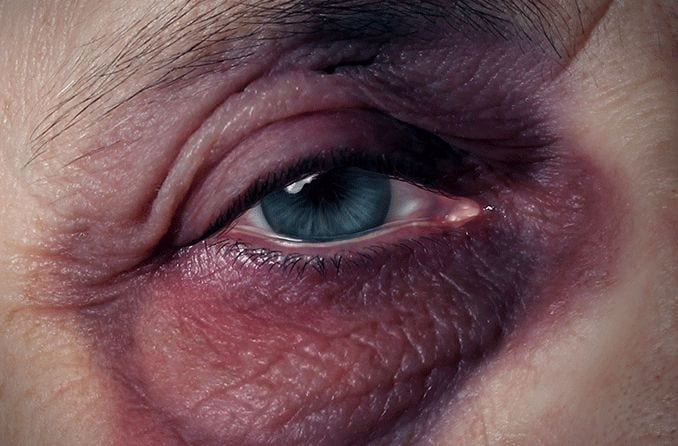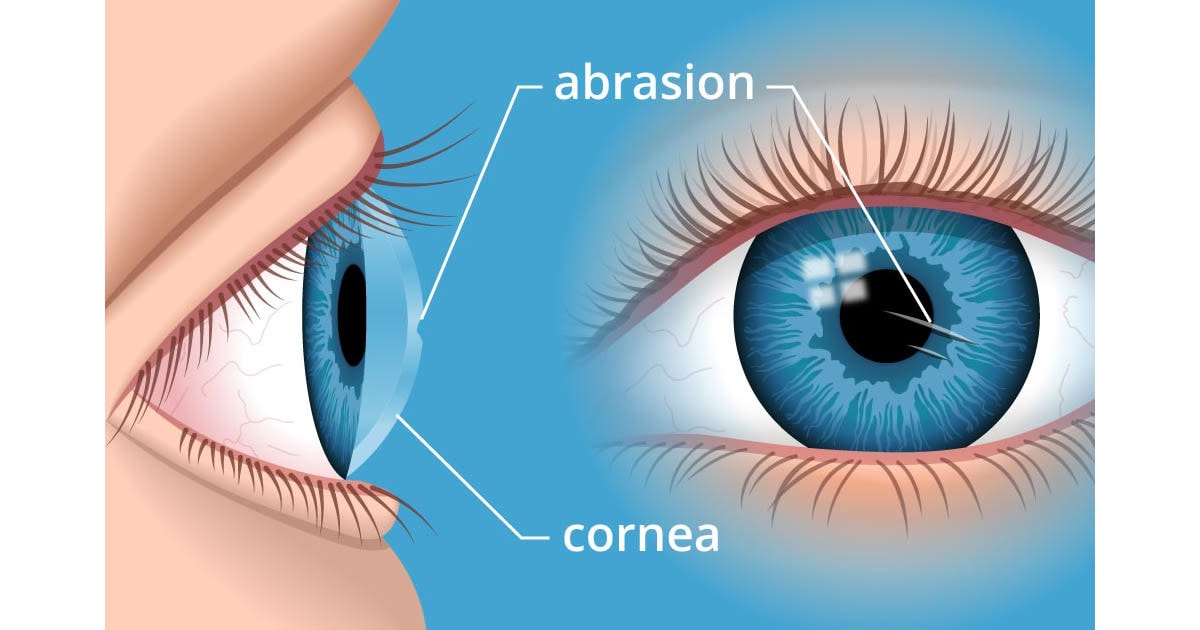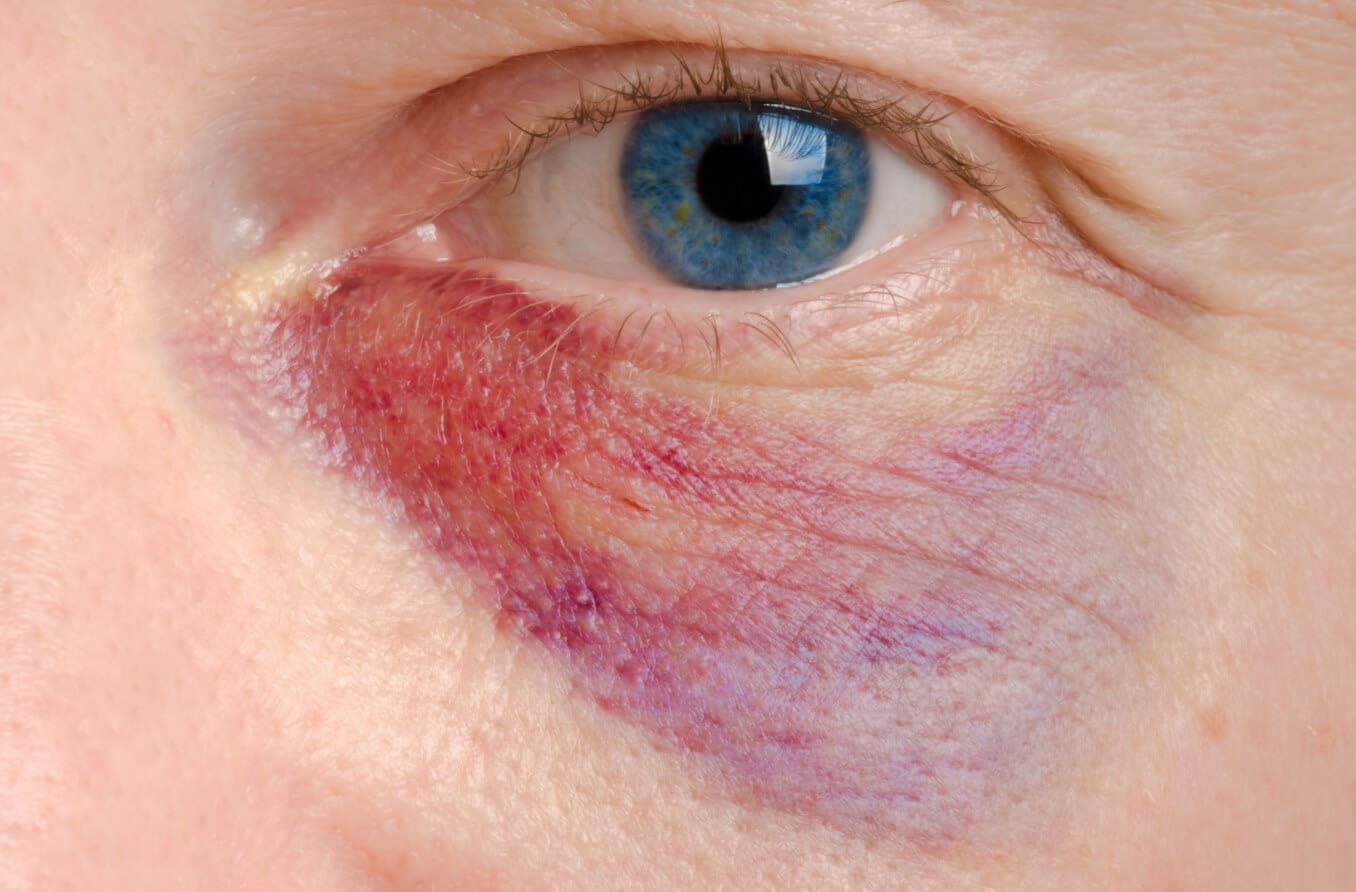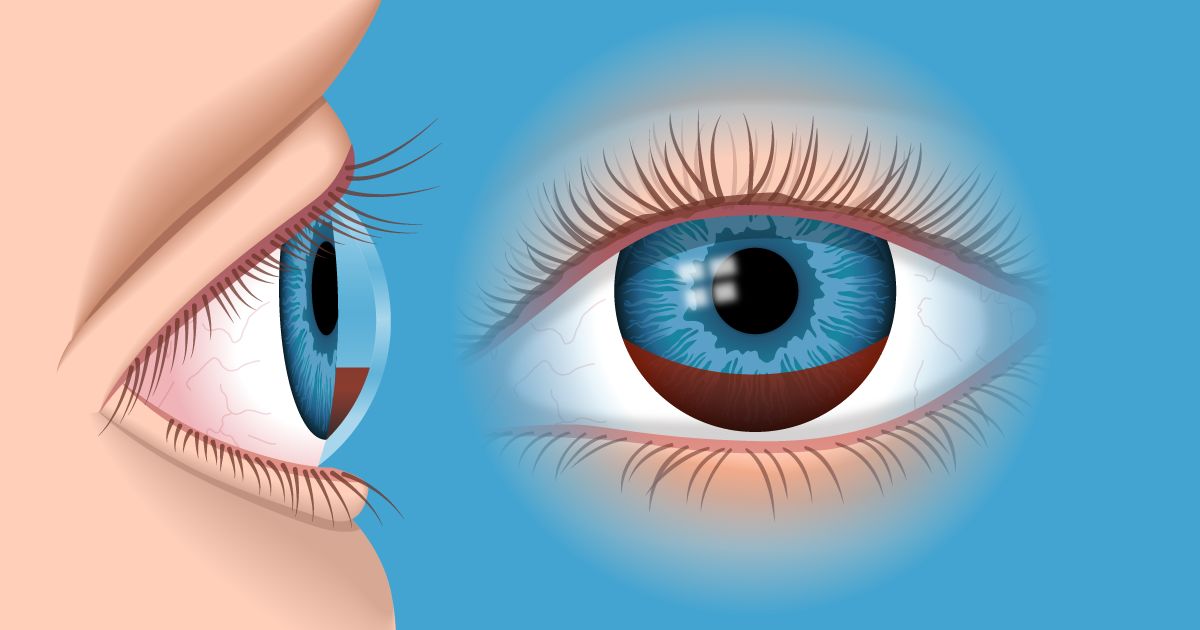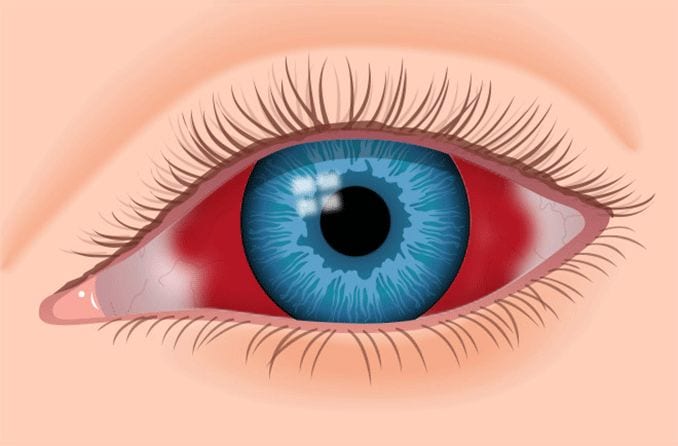What is a black eye?
A black eye occurs when fluid collects in the tissues surrounding the eye, usually after an injury to the area. It is technically a bruise or discoloration caused by broken blood vessels under the surface of the skin.
Because the facial skin around the eye socket is relatively thin and transparent, even a slight pooling of blood can result in a very noticeable discoloration.
A mild black eye may appear red at first, then darken and get more swollen with time. As a bruised eye begins to heal, it can turn purple, blue, green or even yellow.
Like other bruises, a black eye is often accompanied by swelling.
A black eye might casually be known as a "shiner," but its medical name is periorbital hematoma.
It's more difficult to pronounce, but the term better describes the condition — a collection of blood (hematoma) located in the tissues around, not inside, the eye (periorbital).
What causes black eyes?
Black eyes usually happen after an object strikes the area surrounding the eyes.
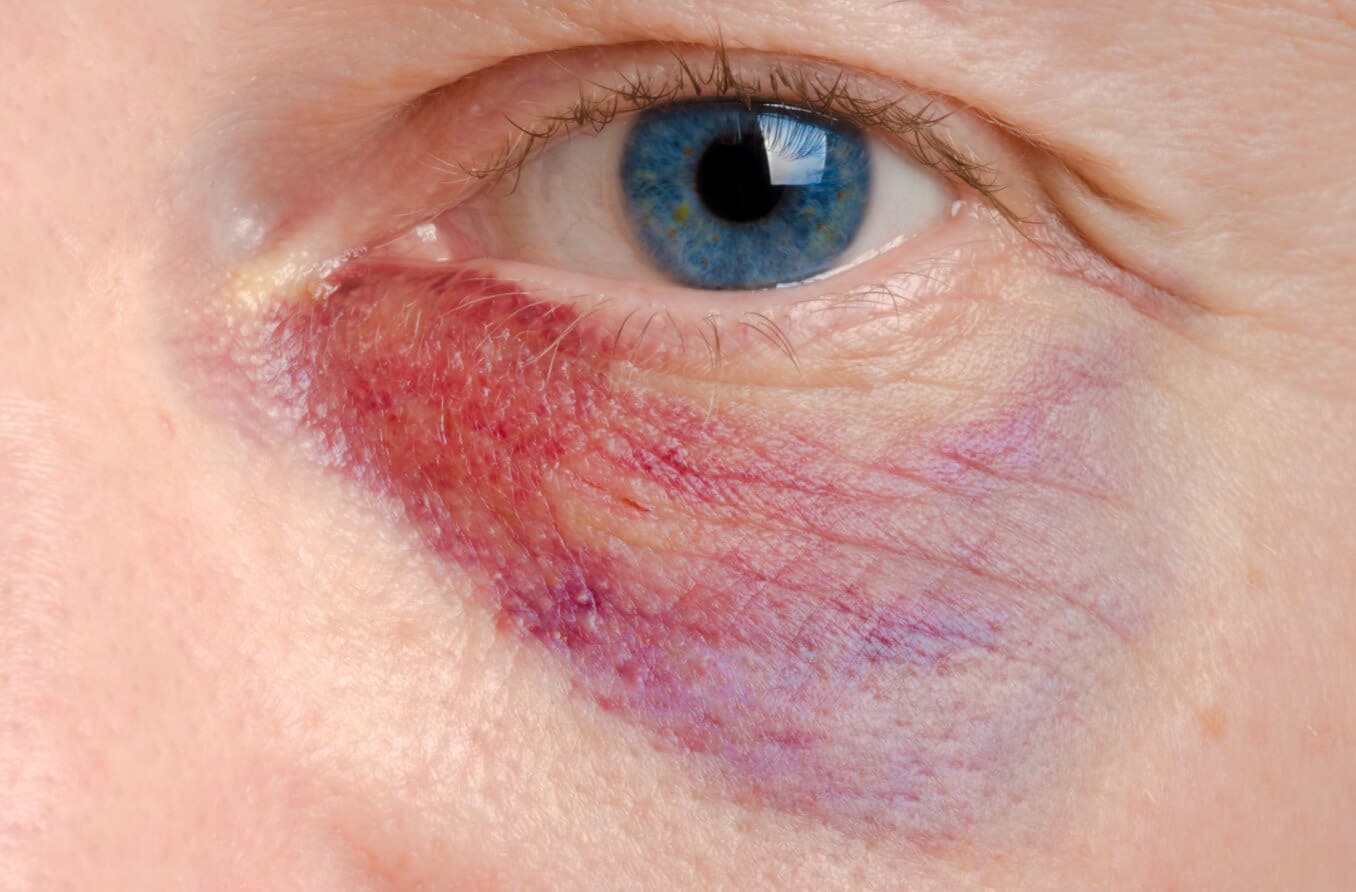
A black eye can affect the area under the eye, or it can surround the eye completely.
All sorts of events can lead to a black eye, from playing sports to accidentally walking into something. But injuries aren't the only things that can cause a bruised eye.
Other common causes include:
- Cosmetic eye surgery
- Sinus infections
- Nasal surgery
- Dental work and tooth infections
Less common but very serious causes of black eyes include cellulitis (an infection around the eyes) and a skull fracture, which tends to result in two black eyes sometimes described as "raccoon eyes."
Bleeding inside the eye, called hyphema, is another serious condition that can accompany a black eye. It happens between the back side of the cornea and the front of the iris.
A hyphema is a medical emergency, since it can lead to serious issues such as increased eye pressure, glaucoma and even vision loss, if left untreated.
For a serious black eye, see an eye doctor or physician as soon as possible.
A bright red appearance to the white part of the eye (sclera) can also accompany a black eye.
This is called a subconjunctival hemorrhage and while it may look scary, it is not usually serious. It typically goes away on its own within a couple weeks.
How to get rid of a black eye
There's no magic cure to get rid of a black eye overnight, but a number of home remedies may help speed up the healing process.
It's important to have an eye doctor or physician examine your black eye before you try to treat it on your own. Once you have the all-clear from your doctor, you can use the following at-home treatments:
- Start with a cold compress. Apply a bag of frozen peas, a chilled spoon or other cold object (but never raw meat) to lower the temperature of the area around the eye as soon as possible after the injury. Apply for 15 to 20 minutes. Repeat as often as once an hour for the first 24 hours after injury.
- Switch to a warm compress. After a day or two of applying cold packs, try gently applying warm (not hot) compresses to your black eye. This will increase blood flow to the area and facilitate healing.
- Gently massage the area surrounding the bruise (not the black eye itself) in the days following the injury. This can help activate the lymphatic system near the bruise and speed up healing.
- Snack on pineapple. The tropical fruit contains a mixture of enzymes that reduce inflammation and boost the healing process, which may help your bruised eye go away faster.
- Load up on vitamin C. Though vitamin C may do more to strengthen blood vessels and reduce how easily you bruise, it may also help speed the healing of your black eye.
- Try bilberry extract. Bilberry is a relative of the blueberry and cranberry. It contains potent antioxidants that may help reduce or eliminate bruising by increasing the effectiveness of vitamin C and strengthening your capillaries.
- Over-the-counter analgesics, such as Tylenol, may help with minor pain. But avoid aspirin, which is a blood thinner and could make your black eye look worse.
SEE RELATED: More ways vitamin C can help your eyes
How long does a black eye last?
In most cases, you will see noticeable improvement in the appearance of your black eye within a week. It will usually disappear completely within a couple weeks.
During this healing period, it's important to protect your eye from further damage by avoiding any activities that could lead to additional injury.
You'll probably notice the color of your black eye changing as it heals. Shades of purple, blue, and even green or yellow are not uncommon during the healing process.
When to seek treatment
In most cases, a black eye is like any other bruise and not much cause for concern. But they can also point to more serious conditions.
Seek immediate medical attention if you notice any of the following symptoms:
- Blood inside the eye
- Blood flow from the ears or nose
- Dizziness, fainting or loss of consciousness
- Changes in vision, including blurry vision, double vision, vision loss or the appearance of flashes or floaters
- Vomiting
- Inability to move the eye
- Behavioral changes or lethargy
- Severe pain
- Bruising around both eyes
- Persistent headache
- Signs of infection, such as warmth, redness, pus or fever
- Excessive swelling or swelling that is not attributable to an injury
How to prevent bruised eyes
To decrease your risk of getting a black eye, remember to wear safety glasses, sports eyewear or even protective headgear with a face shield when you're involved in potentially hazardous activities, including sports.
Wearing a seat belt is also essential and significantly reduces the risk of bruised eyes from car accidents — even minor ones.
There are steps you can take around the house too. For example, don't leave objects on the stairs, since this can easily result in a fall and eye injury. Area rugs also can be a trip hazard, so make sure they lie flat and are wrinkle-free.
Adam Debrowski also contributed to this article.

